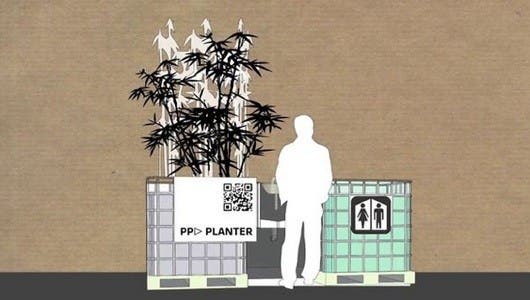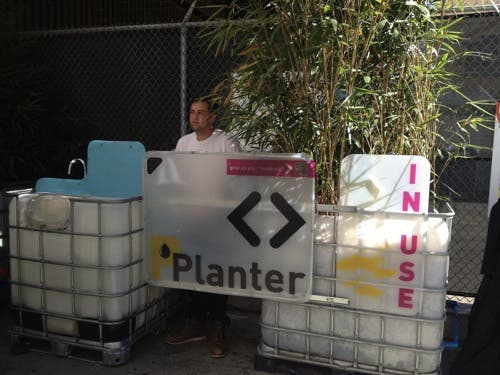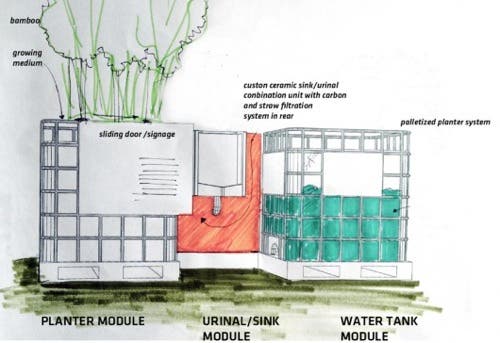San Francisco, for the nice and laid back city that it is, has many problems – and I was pretty surprised to hear that public urination is one of them. Now, they’ve come up with a solution that could not only solve this problem, but also green up the city. PPlanter is a smart and ecologically sensitive public urinal that conserves water while prettying up things with bamboo.
We’ve all had our ‘nature calls’ moments when walking down the street, but there’s always a local restaurant or Starbucks or public restroom which can help ease your problem; but apparently, in San Francisco, as public officials explain, public restrooms are best avoided as they’ve been “hijacked by junkies and sex workers.”
To work around this issue in an efficient and eco-friendly fashion, Brent Bucknum of Oakland-based Hyphae Design Laboratory has developed a chemical-free public urinal-garden hybrid dubbed PPlanter. He describes it:
“PPlanter is a rapidly deployable, reconfigurable public urinal and sink that uses modular biofilters to treat urine and wastewater. The network of sensors for automated monitoring and this web site are an integral part for public feedback and participation in the design of future iterations.”
“The greywater, soap and urine (blackwater) from the ADA-compliant urinal are funneled to a sealed storage tank. The combined water is then pumped into an adjacent planter that houses bamboo plants set in a lightweight mixture of soil and recycled styrofoam coated in pectin. The water from the urinal and sink is evapotranspired by the bamboo and released into the air as distilled, purified water. The bamboo harnesses the incredible amount of nitrogen and phosphorus found in the urine and uses it to produce more bamboo. With high traffic urinals additional planters can be added to the system.”












